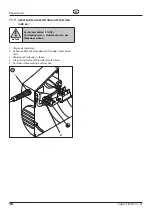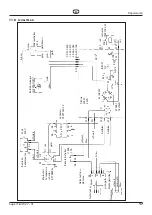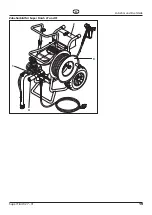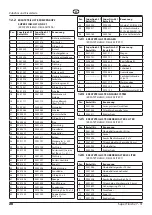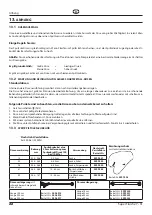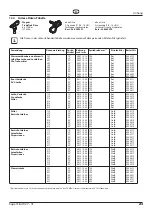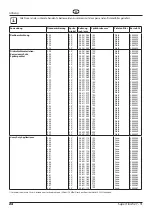
Super Finish 27 • 31
28
GB
Safety regulations
1.
SAFETY REGULATIONS FOR
AIRLESS SPRAYING
All local safety regulations in force must be observed.
The following sources are just a sample of those contain-
ing safety requirements for Airless spraying.
a) The European Standard „Spray equipment for coating
materials – safety regulations „ (EN 1953: 1998).
The following safety regulations are to be observed in or-
der to ensure safe handling of the Airless high-pressure
spraying unit.
•
Flash point
Danger
Only use coating materials with a flash point of
21 °C or above without additional heating.
The flash point is the lowest temperature
at which vapours develop from the coating
material.
These vapours are sufficient to form an inflam-
mable mixture over the air above the coating material.
•
Explosion protection
Danger
Do not use the unit in work places which are
covered to the explosion protection regula-
tions.
•
Danger of explosion and fire through sources of
flame during spraying work
Danger
There may be no sources of flame such as, for
example, open fires, smoking of cigarettes, ci-
gars or tobacco pipes, sparks, glowing wires,
hot surfaces, etc. in the vicinity.
•
Danger of injury through the spray jet
Danger
Caution! Danger of injury through injection!
Never point the spray gun at yourself, other persons or
animals.
Never use the spray gun without spray jet safety guard.
The spray jet may not come into contact with any part of
the body.
In working with Airless spray guns, the high spray pres-
sures arising can cause very dangerous injuries.
If contact is made with the spray jet, coating material can
be injected into the skin. Do not treat a spray injury as
a harmless cut. In the case of injury to the skin through
coating material or solvents, consult a doctor for quick
and correct treatment. Inform the doctor about the coat-
ing material or solvent used.
•
Secure spray gun against unintended
operation
Always secure the spray gun when mounting or dis-
mounting the tip and in case of interruption to work.
•
Recoil of spray gun
Danger
In case of high operating pressure, pulling the trig-
ger guard can effect a recoil force of up to 15 N.
If you are not prepared for this, your hand can be
thrust backwards or your balance lost. This can
lead to injury.
•
Respiratory protection for protection against
vapours of solvents
Wear respiratory protection when spraying.
The user must be provided with a breathing mask.
•
Prevention of occupational illnesses
Protective clothing, gloves and possibly skin protection cream
are necessary for the protection of the skin.
Observe the regulations of the manufacturer concerning coat-
ing materials, solvents and cleaning agents in preparation,
processing and cleaning units.
•
Max. operating pressure
Max. permissible operating pressure for spray gun, spray
gun accessories and high-pressure hose may not fall short
of the maximum operating pressure of 250 bar (25 MPa)
stated on the unit.
•
High-pressure hose
Danger
Attention, danger of injury by injection! Wear
and tear and kinks as well as usage that is not
appropriate to the purpose of the device can
cause leakages to form in the high-pressure
hose. Liquid can be injected into the skin
through a leakage.
High-pressure hoses must be checked thoroughly before they
are used.
Replace any damaged high-pressure hose immediately.
Never repair defective high-pressure hoses yourself!
Avoid sharp bends and folds: the smallest bending radius is
about 20 cm.
Do not drive over the high-pressure hose. Protect against
sharp objects and edges.
Never pull on the high-pressure hose to move the device.
Do not twist the high-pressure hose.
Do not put the high-pressure hose into solvents. Use only a
wet cloth to wipe down the outside of the hose.
Lay the high-pressure hose in such a way as to ensure that it
cannot be tripped over.
i
Only use WAGNER original-high-pressure
hoses in order to ensure functionality, safety
and durability.
Summary of Contents for Super Finish 27
Page 117: ...115 Super Finish 27 31...
Page 118: ...D 116 Super Finish 27 31...



